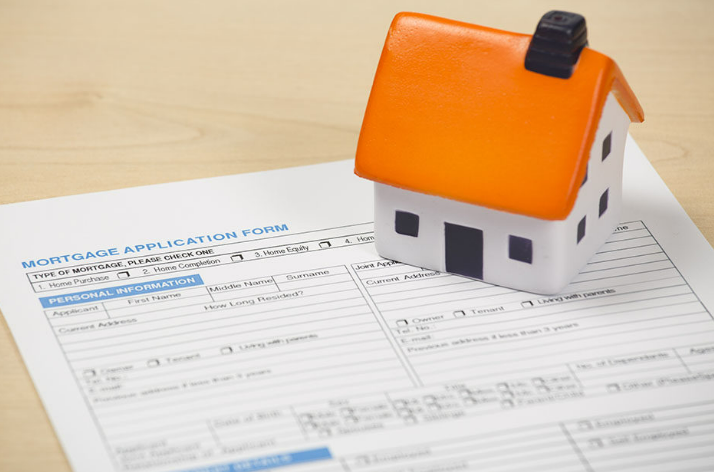
You can streamline the mortgage application process with many lenders by applying online, often completing it in 45 minutes or less, provided you have all your necessary information prepared in advance. However, this quick completion hinges on your readiness. Nonetheless, anticipating the questions you’ll encounter can help you be well-prepared, even if you’re not pressed for time. Here’s what to expect on a mortgage application.
What is included in a mortgage application?
The mortgage application serves as an individual’s formal appeal for financial assistance to purchase a specific property. Essential details encompass information about the property, its value, alongside the borrower’s employment record, credit background, and income particulars.
While most U.S. lenders utilize the Uniform Residential Loan Application, alternative similar applications may surface during the quest for home financing. Despite differing formats, all applications share a common objective: to assess whether a potential borrower possesses the financial stability necessary to repay a home loan, notes Chuck Meier, Senior Vice President and Mortgage Sales Director at Sunrise Banks in Minnesota.
Expect inquiries about your financial status, encompassing income, assets, as well as personal identifiers like your Social Security number. Additionally, documentation substantiating the details you provide will be requisite.
Documents needed to apply for a mortgage
Before tackling the mortgage application, it’s wise to gather all necessary documents and information, especially if you’re seeking assistance from a mortgage lender in person or over the phone. Here’s a rundown of the documents you should have readily available:
- Employment details: Including the names, addresses, and phone numbers of all employers from the past two years.
- Income particulars: W-2 forms from the preceding two years and recent pay stubs, typically from the last month.
- Supplementary income records: Such as dividends, interest, pension statements, Social Security documentation, alimony, child support, and any other relevant sources of income.
- Recent account statements: Covering the past three months for checking and savings accounts, certificates of deposit (CDs), money market accounts, 401(k) or other retirement accounts.
- Form 4506-T or 4506T-EZ: This form, provided by your loan officer, authorizes the lender to access your tax returns.
- Signed purchase agreement: This legally binding contract outlines crucial details such as the purchase price, closing date, associated costs, and other terms agreed upon between you and the home seller.
Questions in a mortgage application

The Uniform Residential Loan Application, specifically, includes the following sections:
Section I: Type of mortgage and terms of loan
In the initial segment of the mortgage application, you’ll be prompted to specify the type of mortgage you’re interested in, whether it’s conventional or FHA. Following this, you’ll be required to provide essential information such as the loan amount, the desired interest rate, the loan term, and the type of amortization (fixed or adjustable). If you’re unsure about which loan suits your needs best or if you need assistance understanding the terms and conditions of the loan, a loan officer can offer guidance and support.
Section II: Property information and purpose of loan
In this segment, the mortgage application will prompt you to furnish the property address and specify whether the loan pertains to a purchase, refinance, or construction. Additionally, it will inquire about the property’s status as a primary residence, second home, or investment property, as well as details regarding the property’s ownership and titling arrangements.
Section III: Borrower information
This section requests comprehensive details about the borrower and any co-borrower, encompassing Social Security numbers, current addresses, educational backgrounds, and marital statuses. Additionally, you’ll need to furnish your residential history.
Section IV: Employment information
Each borrower must supply their employer’s contact details, tenure at the current job and in the profession, job title, and business type. If employed for less than two years, you’ll also need to furnish details of previous employment.
Section V: Monthly income and combined housing expense information
In this section, your income and expenses are compared to assess your mortgage affordability. You’ll be required to list your monthly income, encompassing base income, bonuses, overtime, commissions, dividends, interest, rental income, and any other earnings.
Additionally, you’ll need to detail your monthly housing expenses, both current and anticipated, which may include rent or existing mortgage payments, HOA fees, or mortgage insurance. Self-employed applicants may need to furnish additional details.
Section VI: Assets and liabilities
In this section, you’ll provide details of your assets, including savings, checking, retirement accounts, and any owned properties. For liabilities, you’ll list all debts such as car loans, credit cards, other mortgages, as well as any alimony or child support payments.
Section VII: Details of transaction
This section, aptly named, contains transaction details such as the purchase price or refinance amount, costs related to home improvements or repairs, and the land price if it’s a separate purchase. It also outlines estimated prepaid items and closing costs, mortgage insurance premiums if relevant, and any discount points the borrower is covering.
Section VII: Declarations
In this section, borrowers are required to respond with either yes or no to inquiries about their prior financial circumstances, which include:
- Do you have any outstanding judgments against you?
- Have you declared bankruptcy or experienced property foreclosure within the last seven years?
- Are you currently involved in any lawsuits?
If any of these questions are answered affirmatively, applicants are prompted to provide explanations at the conclusion of the application.
Section IX: Acknowledgement and agreement
This section, where signatures are required, holds legal significance. Here, applicants confirm the accuracy of the information provided in the mortgage loan application and recognize that the lender reserves the right to verify the details provided.
Section X: Information for government monitoring process
The concluding segment of the mortgage application is voluntary and pertains to demographic information for government records. Should you opt to provide this data, you’ll be requested to specify your race, gender, and ethnicity, aiding government assessments of the lender’s adherence to fair housing regulations.
When to apply for a mortgage

Before formally applying for a mortgage during the home buying process, there are several preliminary steps to consider:
- Check your credit score: A higher credit score broadens your mortgage options. While lower scores may still qualify for loans like FHA, expect higher fees and interest rates.
- Save for a down payment: While 20% down payment avoids private mortgage insurance and lowers monthly payments, it’s not obligatory. Many buyers opt for conventional mortgages with as little as 3% down.
- Manage monthly debt payments: Lenders assess your debt-to-income ratio (DTI). Aim for a DTI of 36% or lower, but some mortgages accept up to 50%.
Once prepared, seek preapproval from lenders. While not a guarantee, preapproval signals your credibility to sellers. Then, commence house hunting. Upon finding a suitable property and having your offer accepted, proceed to apply for a final mortgage, either with the preapproving lender or a different one.
Mortgage application tips
Preparation is essential when applying for a mortgage. Here are some tips to help ensure a successful application:
- Compare offers: Before applying, compare mortgage offers from at least three lenders, considering both interest rates and fees.
- Document the down payment source: If someone is assisting with your down payment, obtain a gift letter confirming the source of funds and their purpose.
- Maintain job stability: Avoid changing jobs during the application process, as lenders may deny your loan if your employment situation changes.
- Limit large purchases: Large expenses or new lines of credit can raise concerns for lenders about your ability to afford the mortgage. Avoid these before and during the application process.
- Manage debt wisely: While a lower debt-to-income ratio is preferable, it’s not necessary to pay off all debt before applying. Consult with a lender to determine the best approach for your situation.
- Inquire about rate locks: Consider locking in your rate to secure a low interest rate. Understand the duration and potential fees associated with the rate lock.
